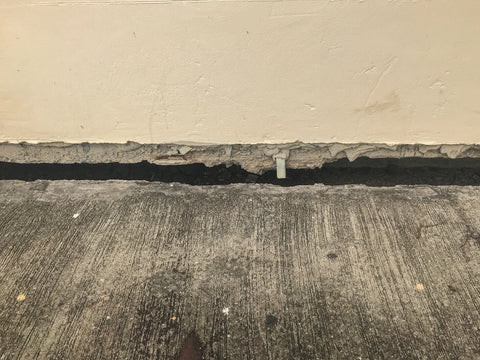Spotting wasps and other stinging insects in summer is a common occurrence. Unfortunately, these bugs can make their way into your house looking for food, water, and shelter. Knowing how these pests sneak inside can help you to deny them access. Check out how wasps are likely to get into your home and a few tips to keep them away.
1. Open Doors & Windows

It can be nice to leave your doors and windows open, but this can provide wasps with a way into your home. Wasps can also access your house when your garage door is open. If attractants, such as food, can be found inside, then wasps will happily make their way indoors. If you want to leave your doors and windows open, make sure your screens are in place and don’t have any tears that wasps can squeeze through.
2. Cracks & Holes

Wasps are able to slip into homes via small cracks and gaps. You’ll want to examine the exterior of your house for potential entry points. Cracks in your foundation and walls can allow these pests into your space. Missing shingles and damage to siding presents an opportunity for entry. They can also enter through cracks in windowsills and door frames. Gaps around pipes, wires, and cables can be used to get inside too. Sealing these openings will help to keep wasps out of your home.
3. Vents

Vents in your house can become an entry point for wasps. Damaged screens or covers on your bathroom, kitchen, dryer, and attic vent can create an opening for these pests. Because attics are an ideal nesting site for wasps, it’s important to make sure these pests don’t gain access to this area of your home. Ensure covers and screens are working correctly and that the vents are properly sealed. If necessary, reseal the area to prevent these pests.
4. Chimneys

Chimneys can be a good nesting spot for wasps, especially if they aren’t used regularly. Your chimney can provide them with shelter and an undisturbed place to hang out. If there are cracks in the chimney or the flue is open, wasps can access your home. You’ll want to make sure your chimney doesn’t have any damage. Check that the cap is in good repair and fits properly.
Tips to Prevent Wasps in Your Home

In addition to sealing potential entry points, there are other things you can do to prevent a wasp problem. Check out a few tips to keep wasps out of your space.
- Take Care of Wasp Nests: Check your home and yard for wasp nests. They are often found on shrubs and tree limbs, in attics, and under decks, eaves, and porches. If you find a nest outside, you can treat it with our Wasp & Hornet Killer. It is a foaming jet spray that reaches up to 18 feet, allowing you treat the nest from a distance.
- Remove Sources of Food & Water: If wasps end up in your home, they’ll stick around if they can find food and water. Removing these attractants will help to discourage them from hanging out in your house. Wasps will feed on sweets and proteins, so clean up crumbs and spills. Take your trash out regularly and keep your space clean.
-
Create a Protective Barrier: Our plant-based insecticide sprays kill pests and also provide residual repellency protection. Spraying the perimeter of your yard and home with our Yard Bug Spray can help to deter wasps and other bugs from settling down in your space. You can also spray common entry points, including around frames, vents, and where utilities enter the home, with our Home Bug Spray to help keep wasps from entering your house.
Sharing your home with wasps isn’t an ideal situation. Knowing how these stinging insects sneak indoors can help you to take steps to prevent an infestation. If you’re dealing with a pest problem, we have your back! Check out our Maggie’s Farm Simply Effective™ Pest Control products for a more environmentally and family-friendly solution when used as directed.
